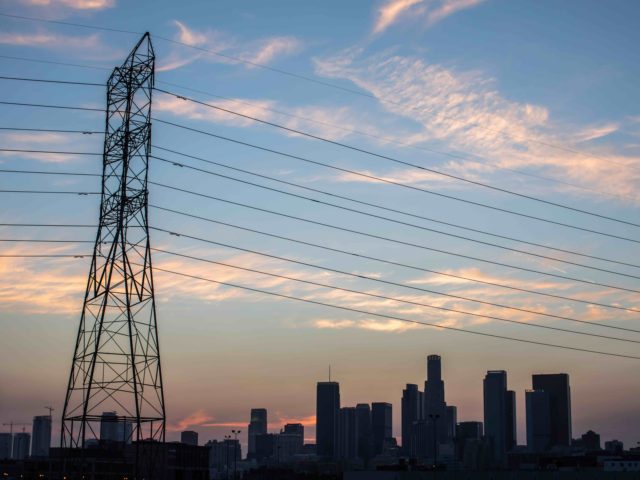Two states, two blackouts.
California suffered a heat wave in August that caused local utility companies to impose rolling blackouts. Now Texas is suffering a deep freeze that has likewise caused power shortages and rolling blackouts.
Both states saw “green” energy alternatives fail in bad weather. But both states also lost power because of government policy more generally: too many government mandates in California, and too little government oversight in Texas.
The California story is familiar to conservatives. Republican Gov. Arnold Schwarzenegger, who turned leftward after failing to implement his promised reforms in the face of union opposition, signed AB 32, the Global Warming Solutions Act of 2006, into law. The state set a limit to greenhouse gas emissions and issued tradable carbon permits. The cap-and-trade system, renewed in 2016, raised costs for local businesses but had almost no impact on global climate change.
In 2018, Democratic Gov. Jerry Brown and the Democrat-dominated legislature went further, signing SB 100, which committed the state to 100% “clean” energy and a target of “carbon neutrality” by 2045. California’s utility companies expanded “renewable” energy sources such as solar and wind, even though there were already signs that the aging electricity transmission infrastructure needed upgrading because it was susceptible to causing wildfires in high winds.
When the heat wave hit, and there was a sudden urge for demand, California could not draw on solar power, because of overcast skies; nor could it draw on wind power, because of calm conditions. Gov. Gavin Newsom told Californians that the state needed to “sober up” about renewable energy as an alternative to fossil fuels.
Nevertheless, just weeks later, he announced that all passenger vehicles — cars and trucks — sold in California would have to be “zero emissions” by 2035.
Conservative Texas has also pursued renewable energy, though it is known for its fossil fuel industry. It is already the number-one producer of wind energy in the U.S. As the Austin American-Statesman reported recently, “Wind power has been the fastest-growing source of energy in Texas’ power grid. In 2015 winder power generation supplied 11% of Texas’ energy grid. Last year it supplied 23% and overtook coal as the system’s second-largest source of energy after natural gas.”
In the recent winter weather, nearly half of the wind turbines in Texas froze, taking out up to 12,000 megawatts from the state’s power supply.
But that was only part of the story.
Many of the state’s power plants had failed to “winterize” their equipment, leading to shutdowns. It was the same problem that regulators had noted in cold snaps in 2011 and in 1989. There are also questions about the management of the electricity grid, and whether state oversight boards did their jobs.
While California has been too ambitious, and draconian, in imposing “green” energy, Texas has been too lax in preparing for extreme weather events, which are not new.
Whether “blue” or “red,” America’s leaders seem to be putting ideology first, instead of prioritizing basic government functions.
Fighting climate change need not mean killing fossil fuel jobs or eliminating crucial power supplies. Nor should promoting small government mean neglecting citizens’ basic needs.

COMMENTS
Please let us know if you're having issues with commenting.